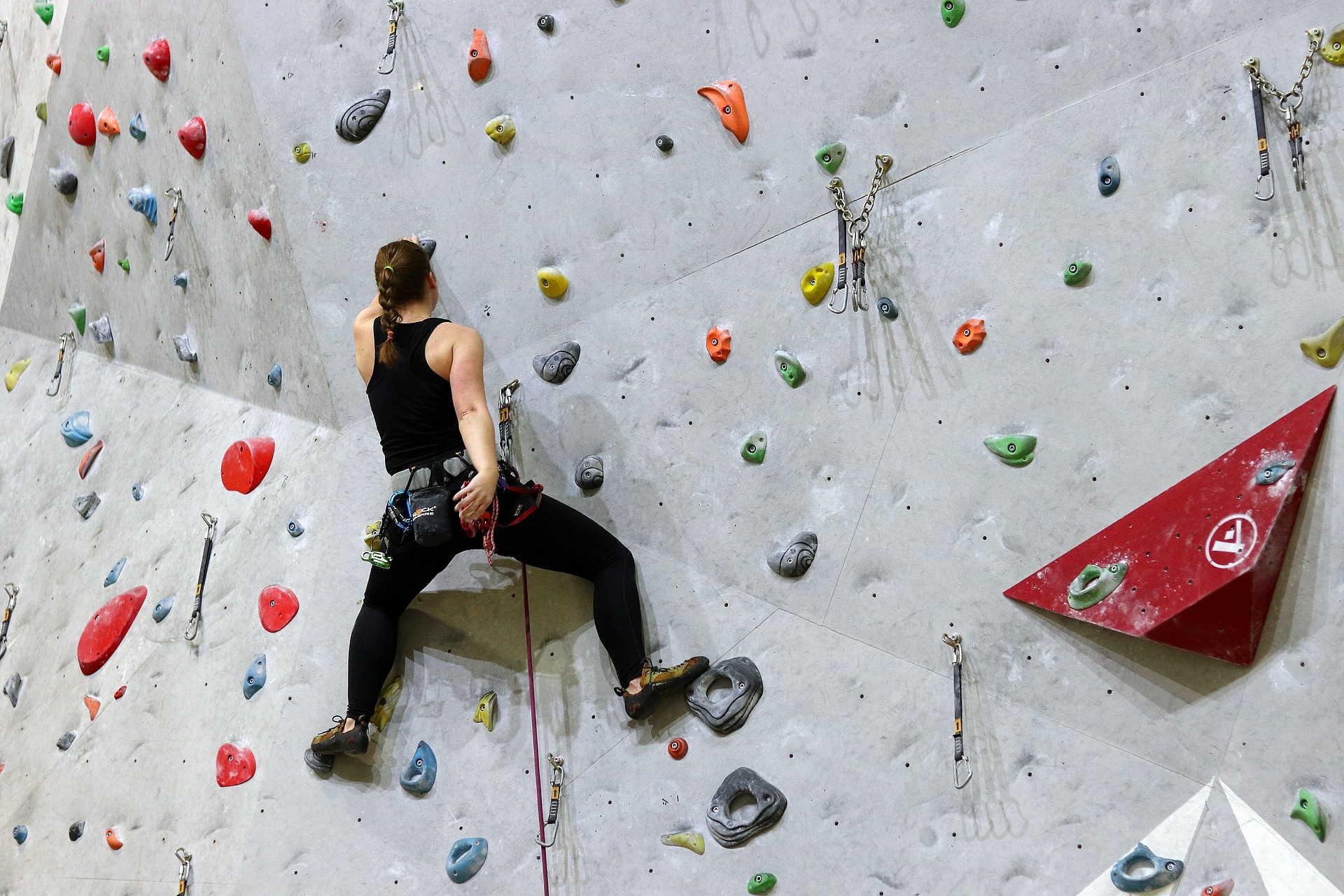The Evolution of Indoor Rock Climbing: From Gyms to Global Competitions
Indoor rock climbing has evolved from a niche hobby to a mainstream sport, encompassing competitive events and fostering a vibrant community of enthusiasts. Read below to explore how indoor climbing has transformed the world of sports and adventure.

The Rise of Indoor Climbing Gyms
Indoor climbing gyms have proliferated worldwide, offering climbers of all skill levels a safe and controlled environment to practice and train. These facilities feature a variety of climbing walls designed to simulate natural rock formations, complete with routes of varying difficulty levels. The accessibility and inclusivity of indoor climbing have attracted a diverse community, from beginners learning the ropes to seasoned climbers honing their skills.
Competitive Climbing: From Local Competitions to Olympic Sport
Competitive indoor climbing has gained momentum, culminating in its inclusion as an Olympic sport in the 2020 Tokyo Games. The sport consists of three disciplines: lead climbing, speed climbing, and bouldering, each requiring distinct techniques and strategies. Competitions range from local and regional events to prestigious international championships like the IFSC World Cup series, where athletes showcase their agility, strength, and mental focus.
Technological Advancements in Climbing Gear
Advancements in climbing gear have enhanced safety, performance, and comfort for climbers. Modern climbing shoes feature specialized rubber soles for improved grip and sensitivity, while harnesses and belay devices incorporate lightweight materials and innovative designs. Climbing ropes and anchors have also evolved to meet stringent safety standards, offering reliability in challenging environments both indoors and outdoors.
Community and Culture
Indoor climbing fosters a tight-knit community characterized by camaraderie, mutual support, and a passion for adventure. Climbing gyms serve as social hubs where climbers exchange tips, share routes, and celebrate achievements. This communal spirit extends beyond the gym walls, with climbers organizing outdoor excursions to natural rock formations, promoting stewardship of climbing areas and environmental conservation.
Training and Technique Development
Serious climbers dedicate time to training specific muscle groups, improving flexibility, and honing technique through drills and repetition. Training regimes often include strength exercises, endurance workouts, and mental conditioning to prepare for the physical and mental demands of challenging climbs. Coaches and trainers provide guidance on proper technique, route reading, and goal-setting, empowering climbers to reach new heights in their climbing journeys.
Useful Tips and Facts
- Safety First: Always check equipment before climbing and follow proper belaying techniques.
- Warm-Up Routine: Incorporate dynamic stretching and easy climbs to warm up muscles before tackling harder routes.
- Footwork Mastery: Focus on precise foot placement to conserve energy and maintain balance during climbs.
- Cross-Training: Supplement climbing with activities like yoga or weightlifting to improve overall fitness and prevent injuries.
Conclusion
Indoor rock climbing has transcended its origins as a recreational pursuit to become a dynamic sport celebrated for its physical and mental challenges. As the sport continues to grow in popularity and accessibility, from local gyms to global competitions, it remains a testament to human endurance, ingenuity, and the thrill of conquering vertical challenges. Whether scaling artificial walls for recreation or competing on the world stage, indoor climbing offers a pathway to personal growth, community connection, and the pursuit of adventure in vertical landscapes.




